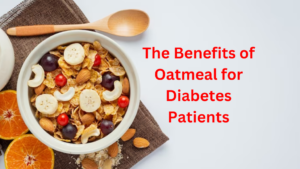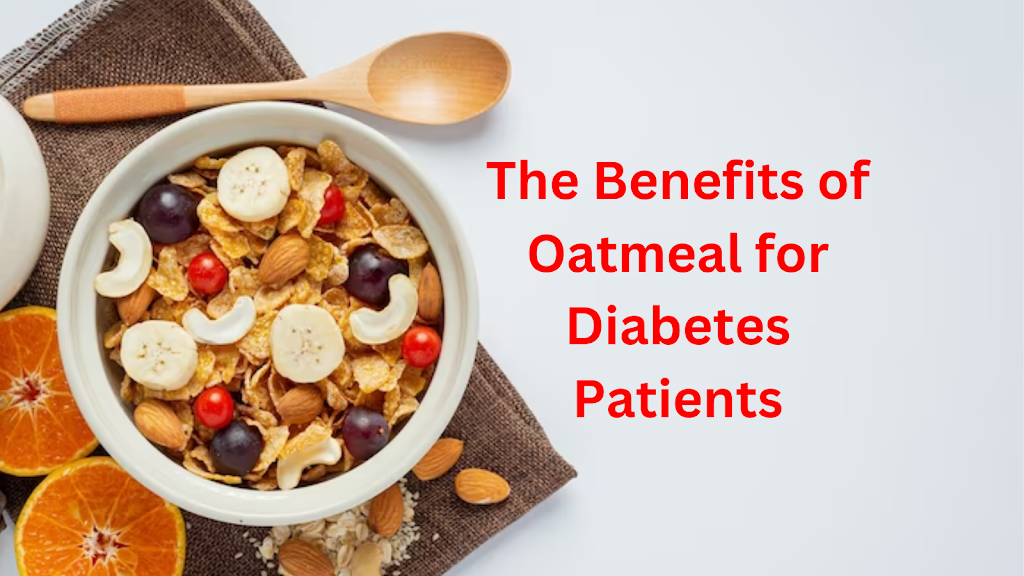The Benefits of Oatmeal for Diabetes Patients
You may know that oatmeal is a healthy breakfast option, but you may not know that it can also be beneficial for diabetes patients. Oatmeal is a complex carbohydrate, which means it releases sugar into your bloodstream slowly. This helps to keep your blood sugar levels stable, preventing spikes and crashes.
Oatmeal is also high in fiber, which can help to regulate digestion and bowel movements. Additionally, oatmeal is a good source of protein and minerals, such as magnesium and zinc. All of these nutrients are essential for diabetes patients.
In this article, we’ll explore the many benefits of oatmeal for diabetes patients. We’ll also provide a few recipes for delicious and healthy oatmeal dishes.
What Are the Benefits of Oatmeal for Diabetics?
There are a few benefits of oatmeal for diabetes patients. First, oatmeal is a complex carbohydrate, which means it breaks down slowly in the body and doesn’t cause a spike in blood sugar levels. Oatmeal is also high in fiber, which can help regulate blood sugar levels. Finally, oats have a low glycemic index, meaning they don’t cause a rapid rise in blood sugar levels like some other foods can.
How Does Oatmeal Help to Control Blood Sugar Levels?
Oatmeal is a complex carbohydrate, which means that it is digested slowly and that it releases glucose into the bloodstream gradually. This helps to keep blood sugar levels stable, preventing spikes and dips. Oatmeal is also a good source of fiber, which can also help to regulate blood sugar levels.
In addition, oatmeal contains beta-glucans, a type of fiber that has been shown to improve blood sugar control. Beta-glucans are able to do this by slowing the digestion of starch and sugars, and by binding to cholesterol and other toxins in the intestine. This reduces the amount of glucose that is absorbed from food, helping to keep blood sugar levels stable.
 |
| The Benefits of Oatmeal for Diabetes Patients |
What Are the Different Types of Oatmeal?
There are a few different types of oatmeal that you can try, but the most common are steel-cut oats, rolled oats, and instant oats.
Steel-cut oats are made from whole oat groats that have been chopped into small pieces. They’re the least processed type of oatmeal, and take the longest time to cook.
Rolled oats are made from steamed and flattened whole oat groats. They’re processed a bit more than steel-cut oats, and cook a little bit faster.
Instant oats are pre-cooked, dried, and then ground into a powder. They’re the most processed type of oatmeal, and cook the fastest.
Tips for Preparing Oatmeal for Diabetes Patients
When preparing oatmeal as part of your diabetes health plan, here are a few tips to keep in mind. First, opt for plain oatmeal, and avoid any flavored versions. These usually contain added sugar, which you want to avoid. Also, just be aware of the other ingredients you add to it. Cinnamon and nutmeg are fine spices to use, but if you’re using dried fruit or other add-ins, keep an eye on the portion size and make sure it fits in with your overall meal plan.
Another tip is to minimize the amount of fat that you use when cooking oatmeal. You can use low-fat milk or water instead of whole milk for a little extra flavor and creaminess. And lastly, when possible opt for steel cut oats over instant oats — these take longer to cook but have a higher fiber content that can help balance blood sugar levels more effectively than instant oats.
Recipe Ideas for Diabetics Who Want to Try Oatmeal
Oatmeal is a great food for diabetes patients, but the key is to focus on recipes that are low in sugar, fat and calories. For example, you could try a bowl of plain oatmeal with some fresh berries and nuts for added flavor. You can also mix in protein powder or Greek yogurt to get some extra protein.
If you’re feeling creative, why not try making overnight oats? Just combine rolled oats with liquid (almond or coconut milk work best) and add in some pumpkin puree, cinnamon and raisins. This is a great way to add texture and sweetness without having to add sugar.
If you’re looking for something sweet but still want to stick to the diabetes-friendly oatmeal path, how about a bowl of oatmeal topped with some almond butter and banana slices? Not only is it delicious, but it’s also packed with healthy fats and fiber that will keep your blood sugar levels in check.
No matter which option you choose, make sure to watch your portions—a little goes a long way when it comes to oatmeal for diabetics!
FAQs About Eating Oatmeal and Diabetes Control
Ready to find out more about oatmeal and diabetes? Here are some FAQs about the topic.
-
How many carbs in a bowl of oatmeal? Generally, one cup of cooked oatmeal contains around 27 grams of carbohydrates.
-
Can I eat sweetened instant oats? Instant oats typically contain added sugar, so you should avoid them when possible. Stick to steel-cut and rolled oats for better blood sugar control.
-
Is it better to eat dry or cooked oats? Cooked oats are much better for diabetes control because they are absorbed more slowly, helping with blood sugar regulation.
-
How often can I consume oats? Oatmeal can be eaten 1–2 times per day, depending on your personal carb needs and the advice of your doctor.
-
Can oatmeal help lower cholesterol levels? Yes! Oats have soluble fiber which can help reduce cholesterol levels and improve heart health.
Conclusion
Diabetes is a serious condition, and it’s important to do what you can to manage it. Oatmeal is a great food to add to your diet if you’re trying to manage your diabetes, because it’s low in sugar and calories, and it’s packed with nutrients.
If you’re not sure how to incorporate oatmeal into your diet, talk to your doctor or a nutritionist. They can help you come up with a plan that will work for you, and they can give you tips on how to make oatmeal more interesting so you don’t get bored with it.
Oatmeal is a great food to add to your diet if you’re trying to manage your diabetes, and it’s a good idea to talk to your doctor or a nutritionist about how to include it in your diet.
